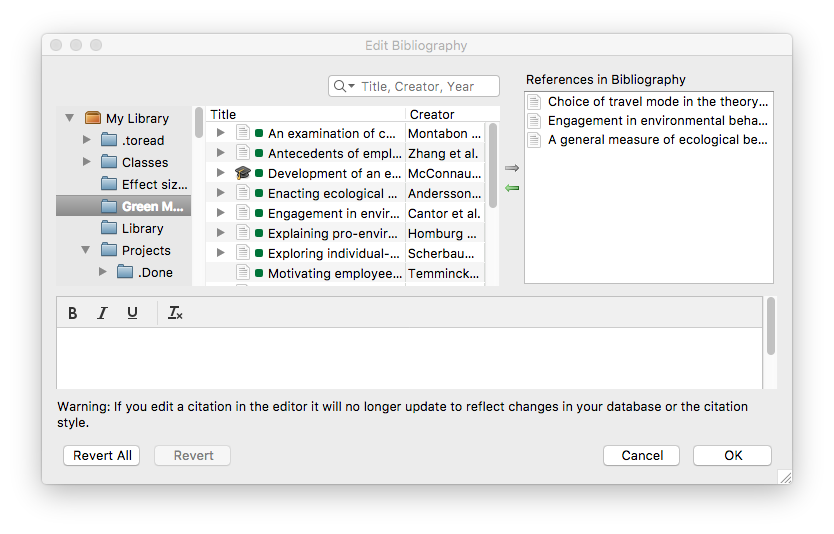

Such formatting will often be lost or look incorrectly when using the clipboard. This option is particularly useful if you’re using styles with complicated formatting requirements, which includes most annotated styles as well as style that list authors on separate lines in the bibliography, such as “American Anthropological Association”. Using “Save as RTF” you can save the bibliography as an RTF (Rich Text Format) file that any word-processor can display. While copying to the clipboard is the most common output method, Zotero offers three other choices with distinct advantages. (For more on the different types of citation styles, see below). For numeric citation styles such as Nature or IEEE the “Citations” option is of little use, as it will just create numbers starting at 1. Less typically, you can create in-text citations for such as (Heilbronner, 1969) by selecting “Citations” as Output Mode when using an author-date style such as “American Psychological Association 6th Edition”. The Worldly Philosophers: The Great Economic Thinkers. Robert L Heilbroner, The Worldly Philosophers: The Great Economic Thinkers, 3rd revised Edition (London: Penguin Press, 1969).
#Zotero word plugin change citation style manual
For example, a note for a book using the citation style “Chicago Manual of Style (full note)” would look like this: according to the Chicago Manual of Style.
#Zotero word plugin change citation style full
Most commonly you will use this to create a full note as it would appear in a footnote, e.g. “Create Bibliography” defaults, unsurprisingly, to creating bibliographies, but you can switch the Output Mode to Citation/Notes (which of the two options is displayed depends on the citation style). Output ModeĮach Zotero citation style has a form for citations-what would appear in the text at the location you insert a citation-and (with very few exceptions) for the bibliography. Now let’s take a closer look at some of the other options. Zotero will then copy a formatted bibliography for the selected items in the selected citation style to your clipboard and you can paste it anywhere you want, e.g.

In most cases you will use “Bibliography” as the Output Mode and “Copy to Clipboard” as the Output Method-more on that momentarily. You can also right-click on any collection and select “Create Bibliography from Collection”. You can select multiple items using ctrl+click (Windows & Linux) / cmd+click (Mac) to add individual items to a selection or shift+click to select a range of items. To create a bibliography for one or multiple Zotero items, simply select them in the center pane of Zotero, right-click, and select “Create Bibliography from Items”. The Quick Way: Citations directly from Zotero Zotero also provides you with options to view your items as reports or analyze them using a timeline or text-mining tools. Your option range from creating a bibliography on the fly, simply using drag & drop to sophisticated citations including ibid, supra notes, disambiguation etc. Zotero allows you to create citations and bibliographies from items in your library. The Quick Way: Citations directly from Zotero.Orphaned items can exist if they were inserted by a collaborator from their My Library or a group you don't have access to or if you they were deleted from your Zotero library.A user guide for the Zotero reference manager Items that are orphaned (not connected to any items in your Zotero database) will not have an “Open in My Library” button.

In the Add Citation dialog box, you can click on the bubble for a cited item, then click “Open in My Library (or the Group Library's name)” to view the item in Zotero. Press Enter/Return again to insert the citation and close the Add Citation box. The item will appear in the dialog box in a shaded bubble. Select an item by clicking on it or by pressing Enter/Return when it is highlighted. Items you have already cited in the document will be shown at the top of the list under “Cited”. Matching items will be shown for each library in your Zotero database (My Library and any groups you are part of). Matching items will instantly appear below the dialog box. Start typing part of a title, the last names of one or more authors, and/or a year in the dialog box. The citation dialog is used to select items from your Zotero library, and create a citation.

Pressing the button brings up the citation dialog. You can begin citing with Zotero by clicking the “Add/Edit Citation” ( ) button.


 0 kommentar(er)
0 kommentar(er)
